Growing, harvesting, and eating foods grown in your simple garden at home sounds great. But have you thought of aquaponics? Here’s the ultimate aquaponics for beginners guide!
Aquaponics has shown to be one of the fastest-growing trends. Especially for people who want to eat more sustainably produced food. There’s one video I saw showing how this organic gardening secret grows you up to 10 times the plants, in half the time, with healthier plants!
I’m working on having a green thumb. And I have done so much research, from starting my garden to growing and harvesting herbs!
I came across some articles about aquaponics. So I was intrigued and realized that I wanted one in my home.
If you’re like me who wants to start gardening with aquaponics, then here’s an ultimate aquaponics guide for beginners.
What is aquaponics?
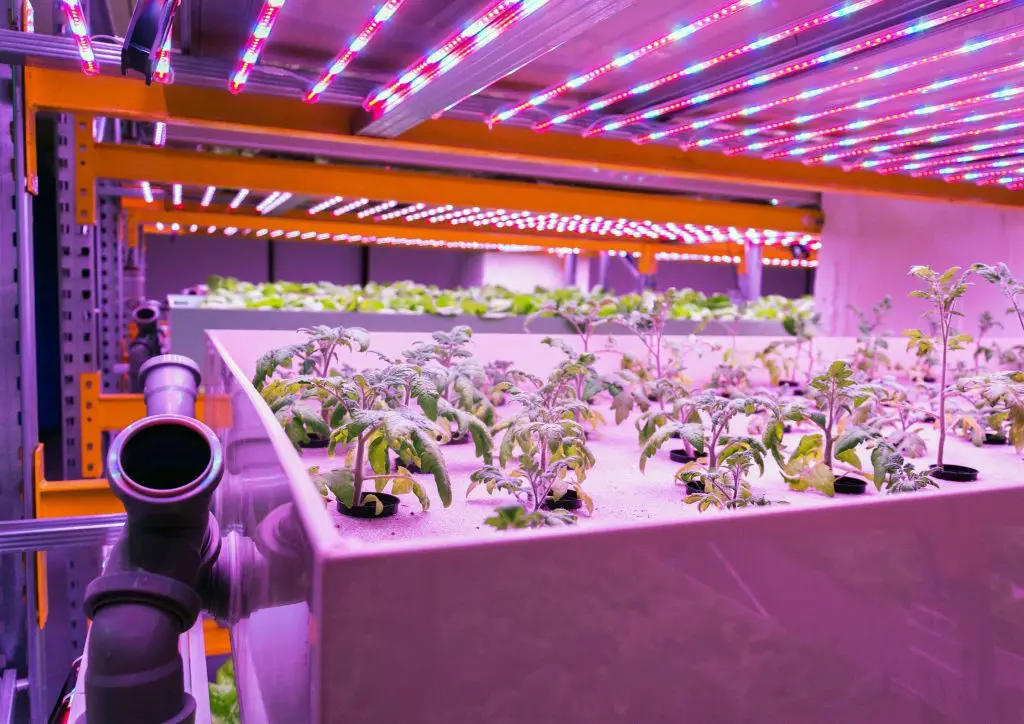
Have you heard of aquaponics? Aquaponics combines fish farming (aquaculture) and growing plants in a nutrient solution (hydroponics).
Aquaponics allows you to grow organic food in a self-sustaining garden with limited space and resources.
The two components, aquaculture, and hydroponics connect through a water medium that circulates between them. That is where the aquaponics magic happens.
The plants can get nutrients from the water containing fish wastes. The plants absorb excess nitrogen and produce purified water supplied to the tank in exchange.
The goal of aquaponics is to build a closed-cycle system that doesn’t require you to add nutrients to your plants. Your hydroponic crops should be able to get all of their nutrients from the fish tank’s water.
You can learn more about how aquaponic nutrient flow works here.
The microbial community is a third important living community in an aquaponic system. It is helpful in nitrifying bacteria contained within a biofilter.
A simple aquaponics system uses helpful microorganisms to grow plants and raise fish.
Why use an aquaponic system?
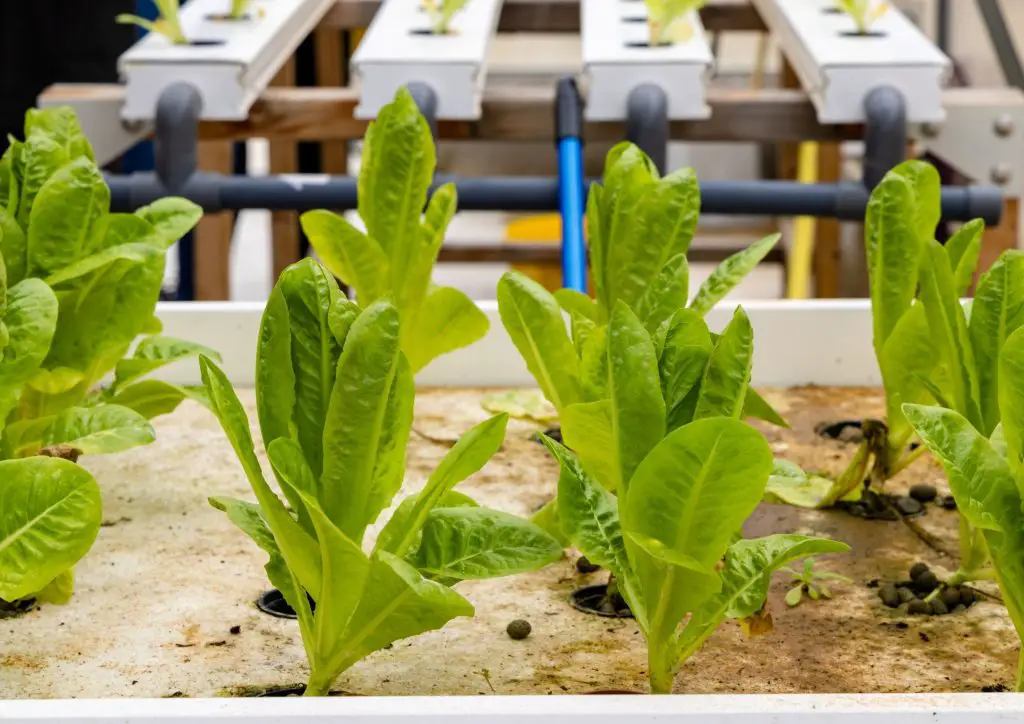
Aquaponics is ideal for those who want to grow their food sustainably and organically.
You can set up aquaponics indoors, outdoors, or in a controlled environment such as a greenhouse.
Aquaponically grown plants consume up to 95% less water than traditionally grown plants. Furthermore, they are grown without soil, eliminating the problem of soil erosion.
It also eliminates artificial pesticides and fertilizers, making organic farming easier.
You can quickly get herbs and spices you can add to your homemade omelette.
You can do aquaponics on a budget by doing it yourself and utilizing recyclable materials. Or on a larger scale by buying pre-made aquaponics kits or starting a large system.
The Benefits of Aquaponics
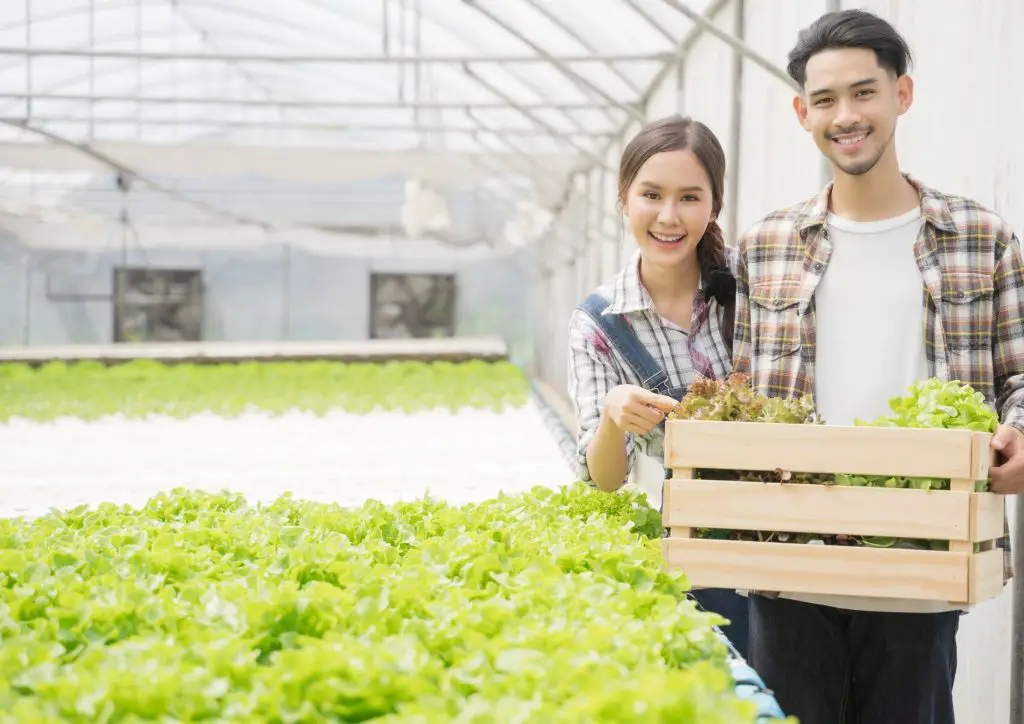
- With aquaponics, you can grow food all year How quickly do aquaponic plants grow? by controlling the conditions or using greenhouses.
- Aquaponics is environmentally friendly since it requires little power and water.
- There is no use of chemicals. You don’t need pesticides or fertilizers.
- Pests and diseases are unlikely to infest the area.
- When compared to traditional farming, crop production per square foot has increased.
- With aquaponics, you can grow many different kinds of fish and plants.
- Most plants are easy to grow and give you a lot of food.
- Fish farming contributes to the growth of the economy.
What do you need? How much does aquaponics cost?
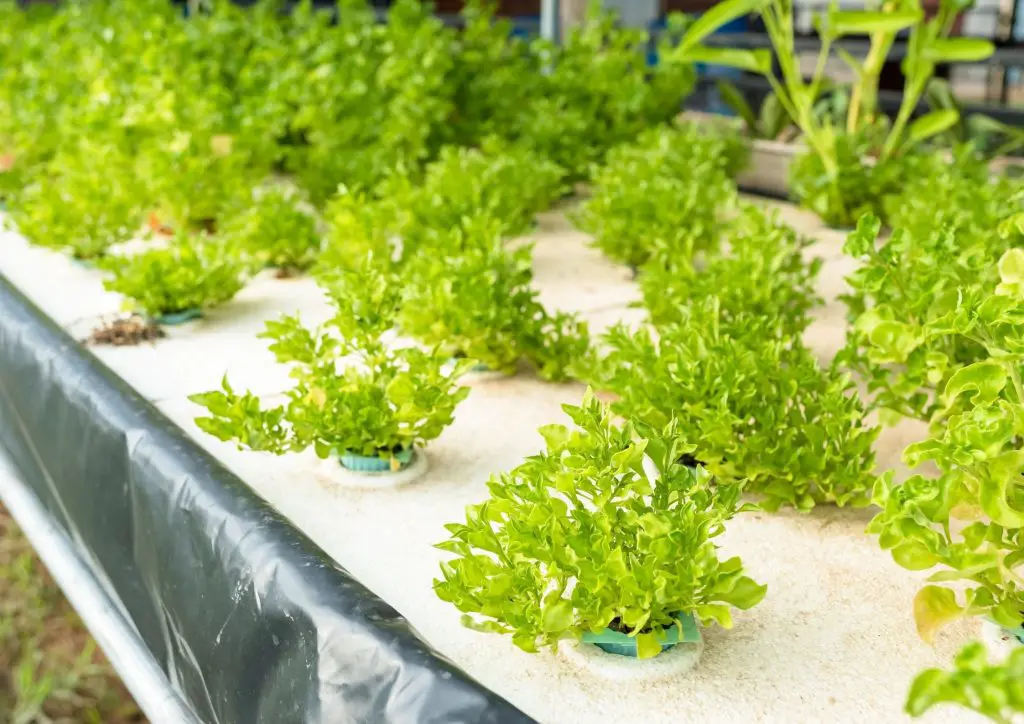
Aquaponics is the most environmentally friendly method of food production. You can easily feed your family with a small aquaponics setup.
No special equipment is required, and almost all you can purchase or build at home for a reasonable price at your local hardware shop.
You can determine the cost of setting up an aquaponics system by the components you use and the quantity needed to get it up and running.
Aquaponic components mostly require containers and pipelines to carry nutrient water from one part of the system to the other.
It’s essential first to determine the size of the aquaponic garden you want to build.
While the initial investment is higher than soil planting, many professionals believe the switch is more cost-effective in the long run.
Here’s everything you’ll need to start your aquaponics system at home!
1. Plants
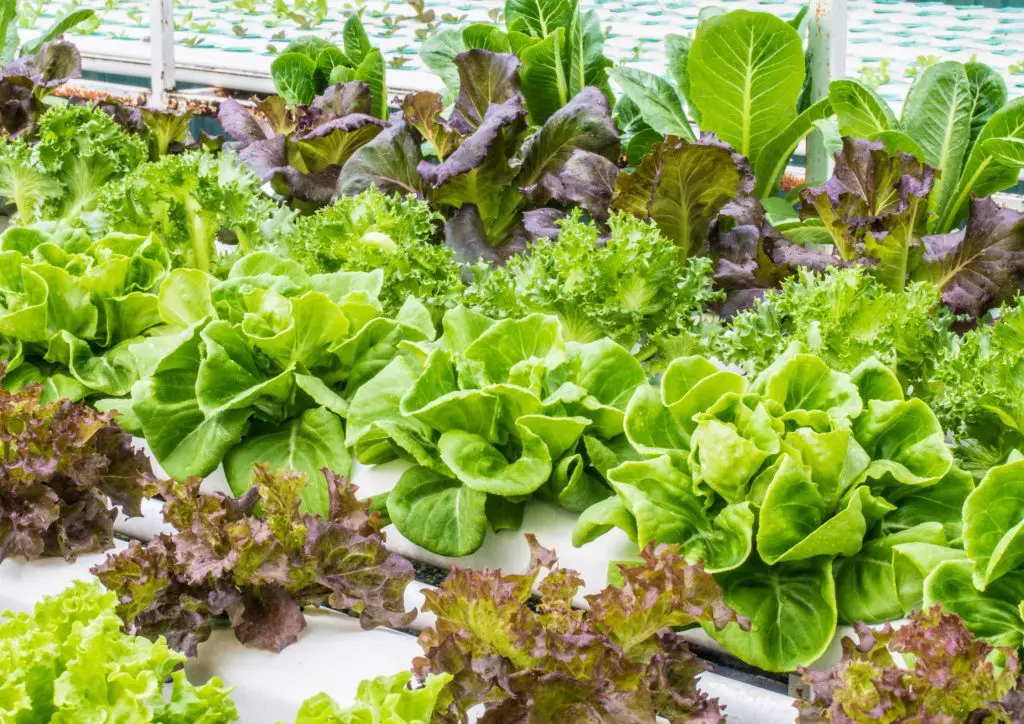
Many people plan to build up their aquaponics system to grow plants naturally.
Plants are also crucial for cleansing and oxygenating the water. It also purifies the water by filtering it and absorbing nitrates before returning it to the fish.
Choosing the right plant to grow in your aquaponics system is critical to the overall success of your system. So choose plants that are easy to grow and suitable for your environment.
2. Fish
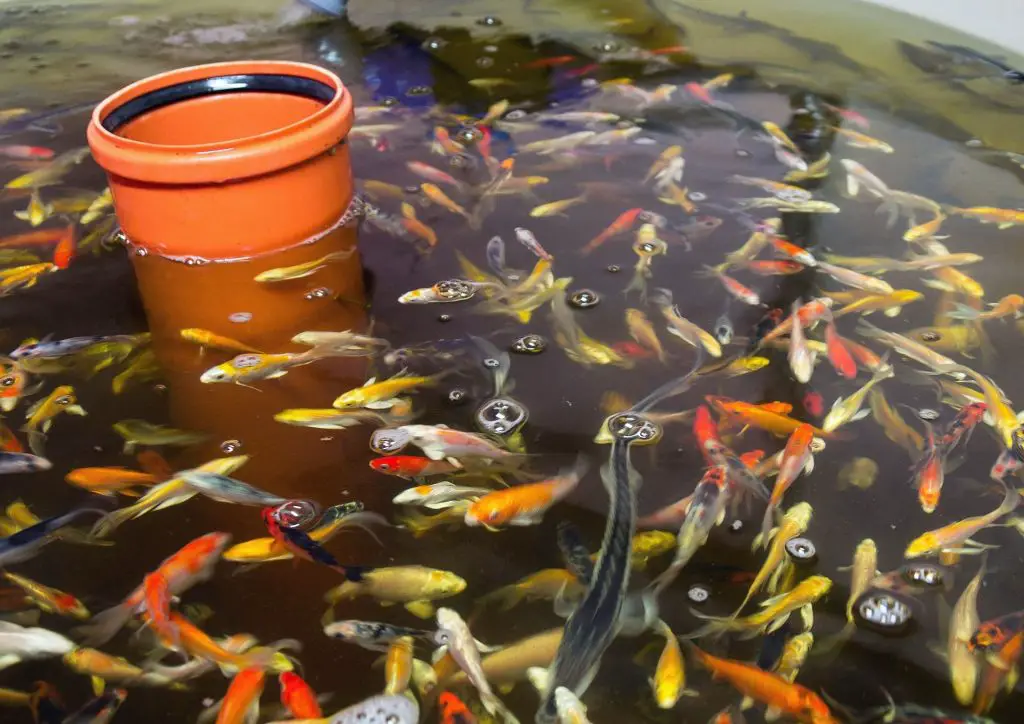
In an aquaponics system, fish are essential because their waste naturally feeds the plants.
To get the most growth out of your fish, you need to know which fish are best for aquaponics. Also, it’s best to choose fish that can’t get sick, are easy to raise, and are easy to find in your area.
You can grow fish like goldfish, koi, tilapia, and catfish that you can eat.
3. Bacteria
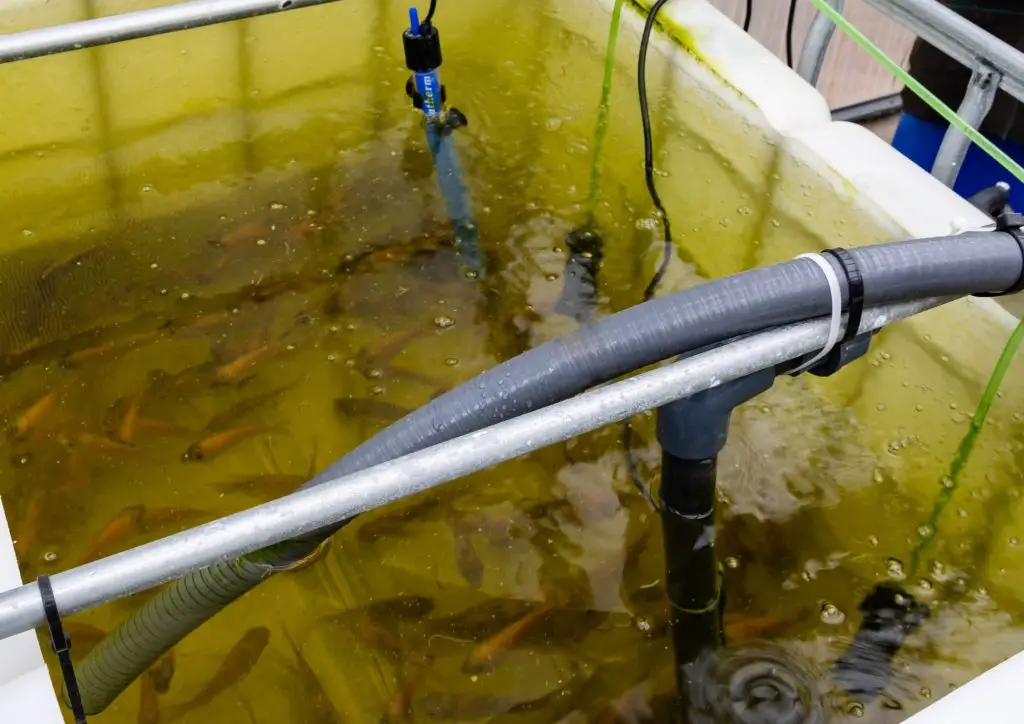
Bacteria turn fish wastes into plant nutrients in an aquaponics system. The water from the fish tank given to the plants contains ammonia from fish wastes nitrified into nitrites and nitrates by bacteria.
Nitrates grow plants. Maintaining a healthy bacterial colony is crucial. Aquaponics biofilters, grow beds, and fish tanks can contain bacteria.
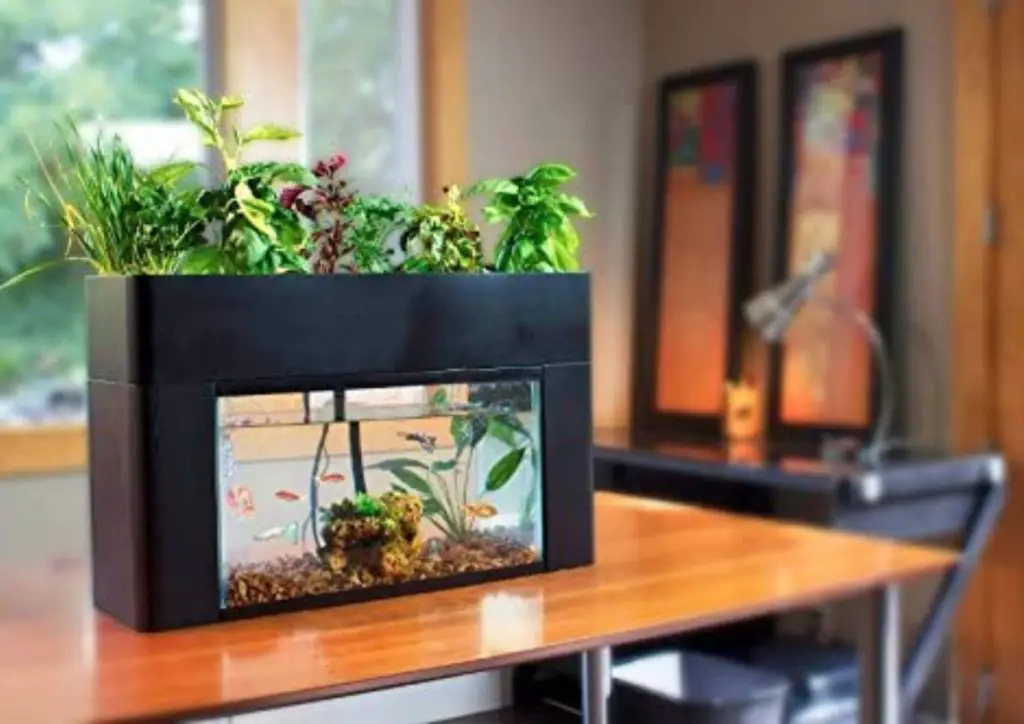
4. Fish Tank
A fish tank or other environment for your fish is one of the most crucial things you’ll need to build aquaponics.
5. Water Pump and Filter

You’ll need a water pump to pump water from your fish tank into your hydroponic system. For your plants, you may also require growing media. Gravel, perlite, or lava rocks can aid in the removal of solid waste from water. You can remove excess waste using tank filters.
6. Grow bed and tubing
Your plants will require a grow bed to sit in and a way for their roots to reach the fish tank’s water flow.
A path from the fish tank to the grow bed and back will be necessary, which will require tubes or piping.
Water may be pumped from the tank into the grow bed, then allowed to run freely from the grow bed back into the tank, depending on your setup.
7. Light and Accessories
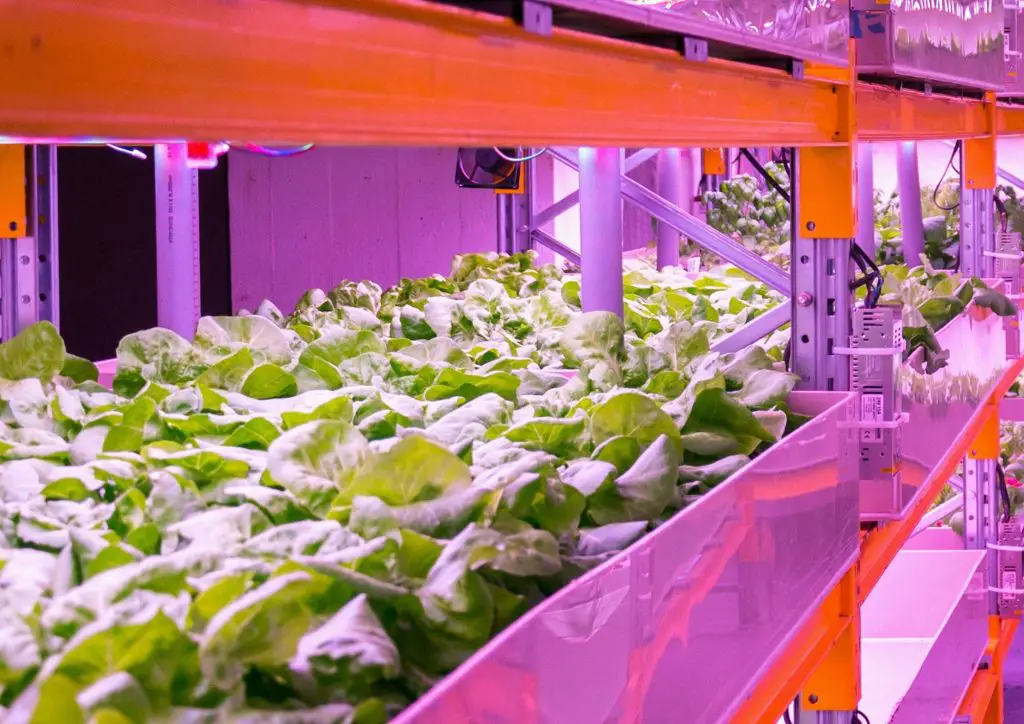
If your aquaponics system does not get direct sunshine, you may need to invest in grow lights to provide your plants with the energy to thrive.
A pH testing kit can also help you verify that your water is at the proper pH for your fish and plants.
Depending on the fish and plants you’re raising and their sensitivity to cooler temperatures, you may need a water heater.
What plants can you grow in an aquaponics system?
You can grow many plants in an aquaponics system. However, you can determine the best plants to grow by the size of your aquaponics system.
Smaller systems have less waste and lower nutrient concentrations because there are fewer fish. On the other hand, larger systems have more fish and higher nutrient concentrations.
And, if you’re on a vegan diet, you plant different vegetables to add to vegan recipes.
Here are some of the plants you can grow in an aquaponics system.
1. Leafy greens
- Lettuce
- Kale
- Spinach
- Swiss Chard
- Arugula
- Bok Choy
2. Herbs
- Basil
- Cilantro
- Parsley
- Oregano
- Rosemary
- Thyme
3. Microgreens
- Alfalfa
- Clover
- Collards
- Kale
- Kohlrabi
- Radish
- Broccoli
- Arugula
- Watercress
- Pea shoots
- Mustard
4. Vegetables
- Tomatoes
- Peppers
- Cucumbers
- Beans
- Squash
- Peas
- Broccoli
- Cabbage
5. Fruiting plants
- Strawberries
- Dwarf Citrus Trees
- Dwarf Pomegranate Trees
- Bananas
- Melons
- Pineapples
6. Flowers
- Marigolds
- Roses
- Nasturtiums
- Pansies
- Sunflowers
- Tulips
- Water hyacinths
What kinds of fish can you grow in an aquaponic system?
There is a variety of fish that do well in an aquaponics system. The following are some of the most common fish to include:
- Tilapia
- Goldfish
- Koi
- Pacu
- Any ornamental fish
- Carp
- Silver perch
- Catfish
- Barramundi
What’s the ideal size of your aquaponic system?
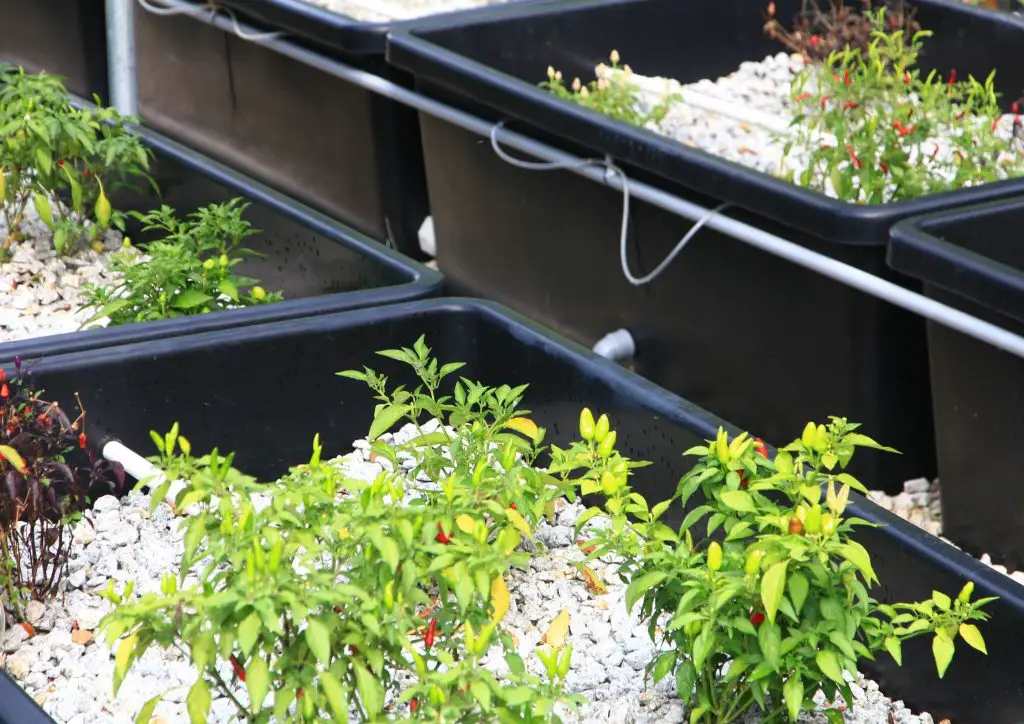
The size of the aquaponics system’s fish tank and grow beds is essential. There will be insufficient filtration for the fish if the fish tank and grow beds are not proportionate.
If you’re using an aquarium to build a small aquaponics, you’ll be limited to aquarium fish that will fit comfortably in your tank.
Choose a tank that is at least 18″ (457mm) deep and holds at least 50 gallons (189 liters) of water if you want to grow larger, edible fish.
It is also important for the plants to have enough spacing. Read more to learn about aquaponic plant spacing!
How to harvest in an aquaponics system?

If this is your first time with aquaponics, you’re probably looking forward to eating the food you’ve grown yourself.
Because I always get excited about harvesting in my aquaponics. I can feel the same adrenaline when I just finished all the deboning process of chicken thighs and barbecuing it—and finally indulging in delicious grilled chicken thighs.
Veggies and fish take time to mature fully. But it will differ depending on the plant and fish species in your system.
When buying plant seeds, the information on the packaging will tell you how long the plant will take to mature and be ready to harvest.
You won’t be able to sow the seeds right away if this is your first time putting up an Aquaponics system. The bacteria will take around three months to convert the fish waste into nutrients.
If you want to start planting right away, you can add nitrates to the water yourself.
The plants will grow at their own pace once you’ve sown the seeds. Keep in mind that you’ll produce organic vegetables with no artificial ingredients.
Here’s a video demonstrating how to harvest in an aquaponics system.
A Few Considerations Before Setting Up An Aquaponics System
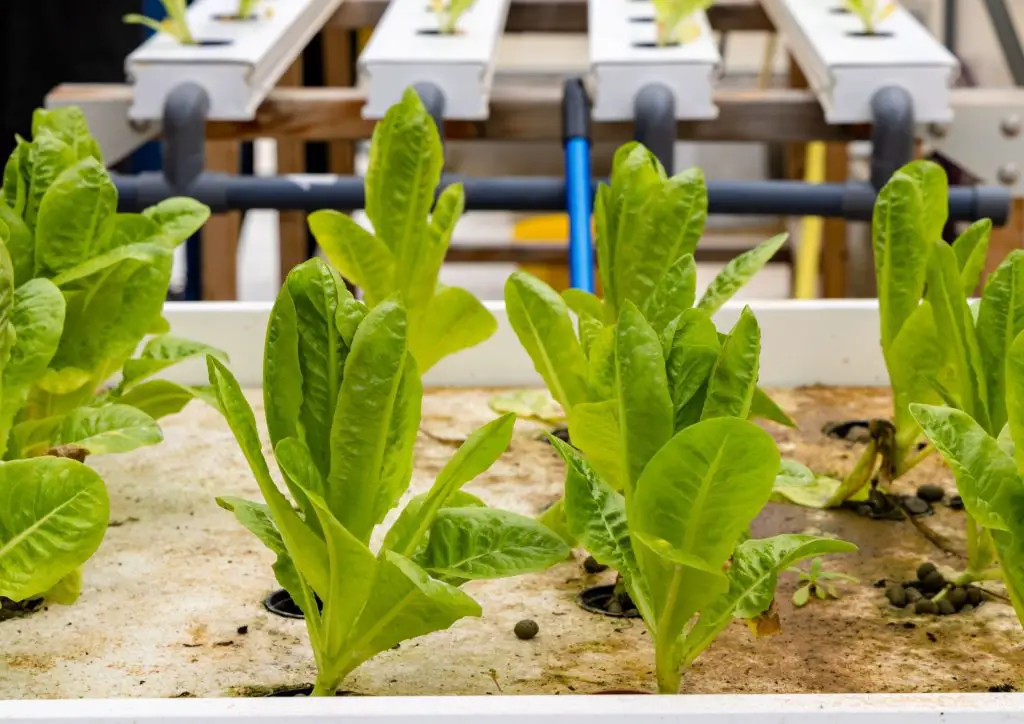
If you’re considering setting up your aquaponic system, consider these things.
This system combines aquaculture with hydroponic gardening to grow plants and fish together. With a 20-square-foot tank and some netted pots, you can grow enough plants for your family and neighbors.
Because this system relies on fish, you must take good care of them for it to work. It means ensuring the water has the right temperature, PH level, light, and oxygen for the fish.
Aquaponic gardening requires only monitoring the water and feeding the fish. There is no need for you to bend to sow your seeds.
Placing the fish tank and netted pots at waist level makes plant and fish care as easy as a child’s game.
Aquaponics is ideal for all ages and activities. It’s quick and effective. As long as you care for your fish, your plants will grow and develop normally. And you’ll harvest the tastiest vegetables ever.
5 Simple Steps in Building Aquaponics System
Step 1: Putting your fish tank together
Before you add any fish, you’ll need to set up the tank like a regular fish tank. You need to dechlorinate the water and let it cycle for 4-6 weeks.
It allows the bacteria to multiply. It ensures that there are enough to break down the ammonia and nitrites into the nitrates needed to nourish your plants.
Include a pump to transport water from the tank to the grow bed and back.
Step 2: Building your media bed
You can build your media bed either above or to the side of the fish tank. The container in which the plants grow will be your media bed. You can use a heavy-duty plastic tray or a wooden pallet crate.
After putting the media bed in place, you’ll need to fill it with the media you want. Clay pebbles have a pH of 7 and won’t affect your water. It is one of the most common media used in aquaponics at home.
Step 3: Adding the fish
When your tank is ready, you can put the fish in.
Step 4: Adding the plants
Leafy plants do well in aquaponics systems. However, you might be able to grow fruiting plants such as peppers and tomatoes if you have enough fish.
Step 5: Maintaining your system
Maintaining aquaponics is simple!
You can feed them simple flakes and give them treats occasionally. Just ensure not to bring any diseases into the tank.
Every week or two, you’ll need to test the water in the tank to see how much pH, ammonia, nitrites, and nitrates are in it. Ammonia and nitrite levels should always be undetectable, and nitrite levels should be low if the plants do their job right.
people also ask
Are Aquaponics Vegetables Tasty?
Most vegetables grown in an aquaponic system taste much better than the same vegetables grown in soil. Aquaponic vegetables are healthy and grown without chemicals or fertilizers made by people. This makes them taste even better than regular vegetables.
How quickly do aquaponic plants grow?
Usually, it takes about two months for plants to grow, but with aquaponics, it usually only takes one month. In some experiments, vegetables and herbs grew up to four times more quickly in an aquaponics system than in a hydroponics system.
Should I change the water in my aquaponics system?
No. You only need to add water to make up for water lost through evaporation or transpiration because as the plants keep on growing, they absorb more water. Other than that, the aquaponics system pretty much cleans itself.
Conclusion
With the suitable material for your aquaponics system, you can make the best setup for your area and goals.
Before you start building your aquaponics system, plan it out carefully. It will make the whole process easier.
Trial and error is sometimes the greatest way to master a new skill in aquaponics and all gardening projects. Rethink your design and try again if it isn’t working the way you want.
What’s your aquaponic plan? Let me know in the comments!

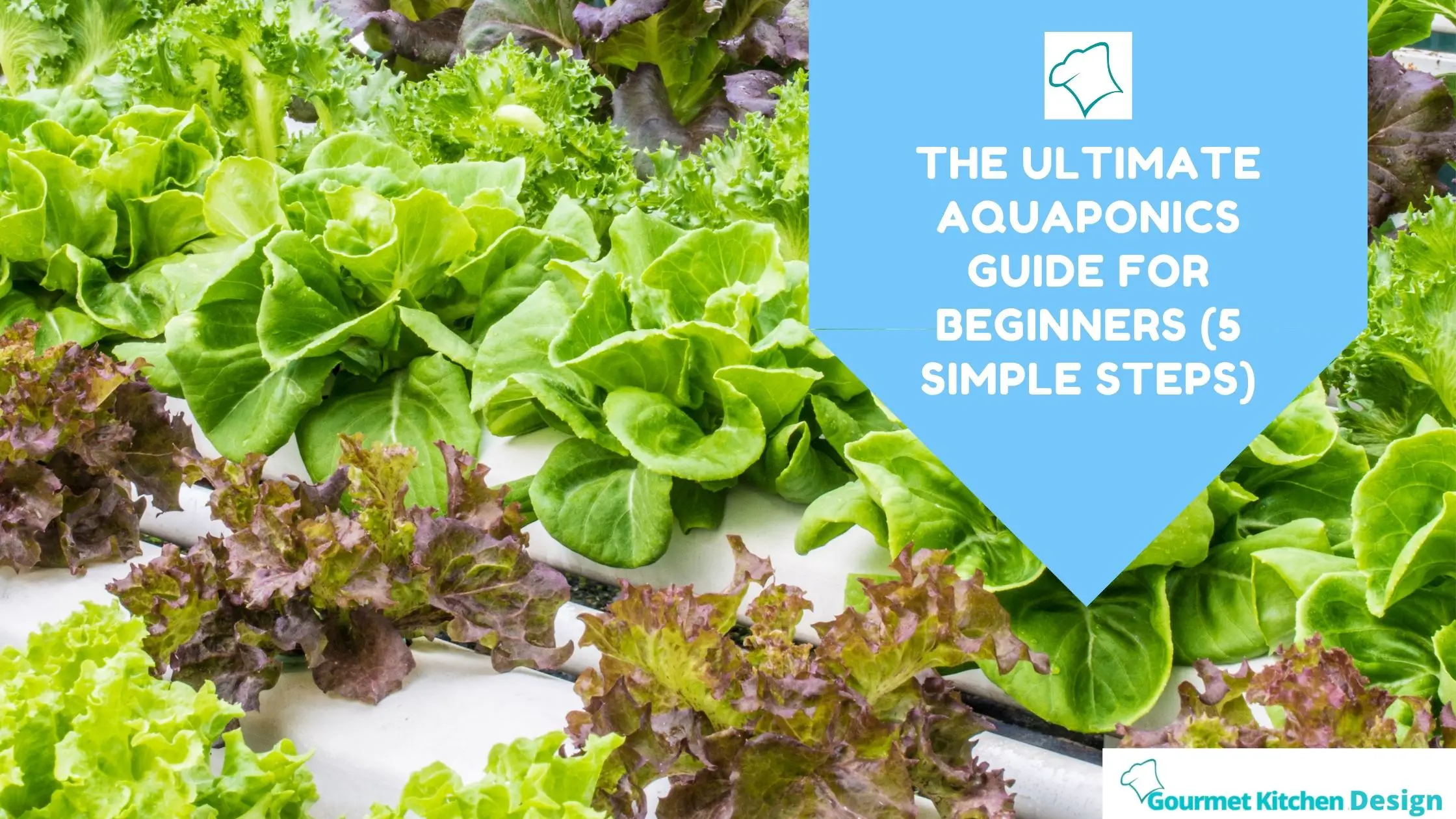

this post deserve to be shared…